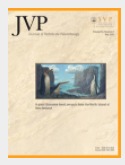“Hybodontiform shark teeth, cephalic and fin spines as well as placoid scales are reported here for the first time from the continental, Lower Triassic Dongchuan Formation near the village of Zhaojia (Huize County, Yunnan Province) in south-west China. The isolated teeth are assigned to three unidentified hybodontiforms but also to a new species of Parvodus, P. huizodus sp. nov., the oldest record of this small-toothed lonchidiid shark genus, extending its range well down into the Lower Triassic. This new species, together with additional hybodontiform remains, provides new evidence of shark occurrences in the aftermath of the end-Permian mass extinction event, when freshwater environments might have acted as centers of origin rather than refugia for sharks. A review of the species assigned to Parvodus and similar small hybodontiform sharks reveals two distinct ecomorphological groups. Group 1, which is characterized by clutching-type dentitions, includes eight species (three of which remain unnamed) ranging from the Middle Triassic to Lower Cretaceous, while group 2, characterized by cutting-crushing type dentitions, comprises 11 species (six of which remain unnamed) including the type-species, P. rugianus ranging from the Lower Triassic to the Lower Cretaceous. The new fossils documented here reveal that hybodontiforms were already adapted to freshwater environments in the Lower Triassic rather than in the Jurassic in China.” Published in the JVP

